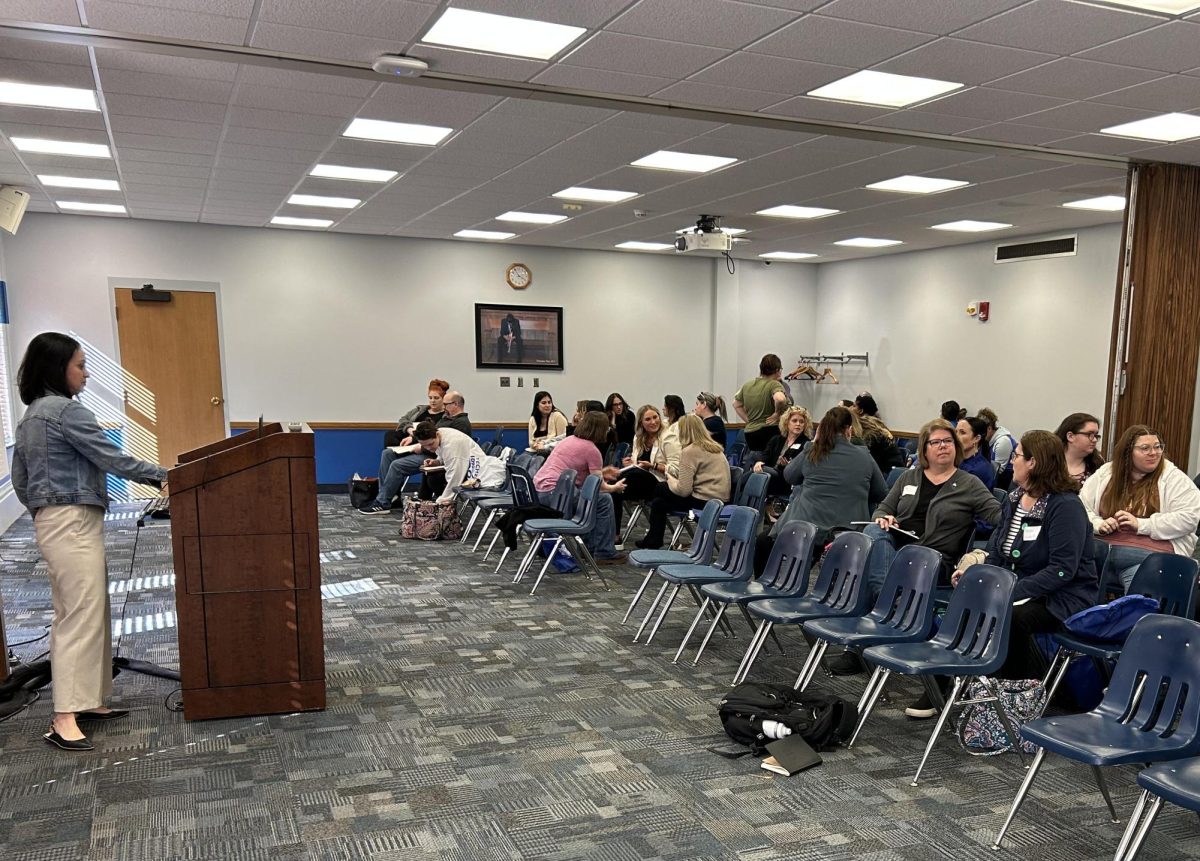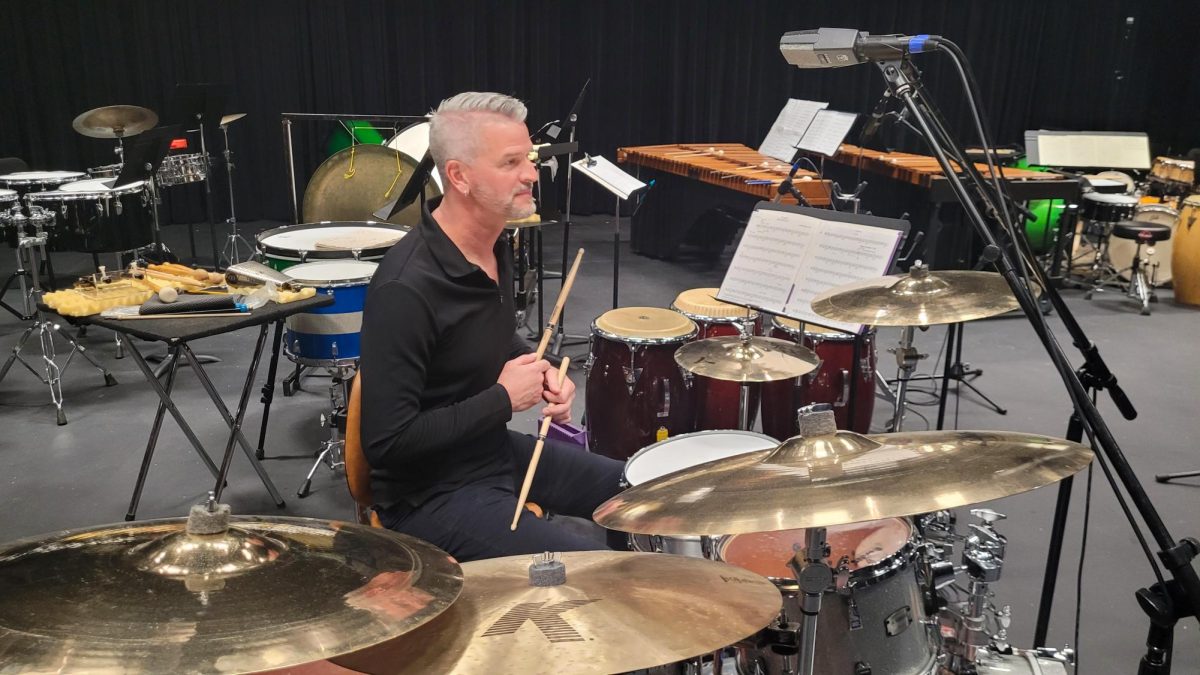Department chairs looking at how new School of Fine and Performing Arts will be structured
April 16, 2018
Editor’s Note: This story looks at one of two new schools being created under the College of Arts and Liberal Sciences. The next article will look at the new School of Communication and Journalism.
Though the chairs of programs that will be in the new School of Fine and Performing Arts said there is still a lot to be discussed in terms of how the new school will be structured, they do not see their individual programs’ accreditation changing.
The School of Fine and Performing Arts will consist of the art and design, music and theater arts departments.
Kevin Doolen, chair of the theater department, said Eastern is one of the few schools where each of these disciplines are individually accredited, and they would not want to change that.
Shellie Gregorich, chair of the music department, and Chris Kahler, chair of the art and design department, are already looking at how the Departmental Application of Criteria (DAC) will work in the new school.
The DAC describes what materials and methods will be used in evaluating performance of faculty members eligible for retention, promotion or tenure.
Gregorich said the music department has a new contract she hopes will be ratified this summer, which means the DAC will be open for review anyways.
The art department will also need to update their DACs, Kahler said.
Since each department will remain as separate disciplines under one school, each chair said they do not think each DAC will merge as one, but are not sure what will be decided by upper administration.
Provost Jay Gatrell anticipates that sometime in the next year there will be an agreement with how to move forward with the new school.
During the next year, the current structures will remain in place, with two chairs during the transition while the school works out the details.
“We don’t want to add more bureaucracy,” Gatrell said. “I do know if we’re going to resource additional faculty lines, we have to be intentional about our resources.”
Doolen said many of the administrative decisions involving personnel and contracts would be discussed more next year.
All three chairs plan to collaborate on potential interdisciplinary programs now that they will all fall under the new school.
Doolen said he thinks the new school model takes advantage of what the departments already are.
“In terms of budgeting and practicality, it allows us to be a stronger, united whole as opposed to three discrete departments,” Doolen said. “I have the ambition of getting a new faculty line that would specialize in musical theater.”
He said this faculty would be able to do musical theater and dance courses relative to both music and theater.
Gregorich said the three chairs already work well together, and next year will be a collaborative process as they try to feel their way through the new structure and see what they can do to take advantage of it.
Some of the art students are already taking theater and music classes, Kahler said.
He added that the hardest part for anyone in the arts is being used to struggling to try to manage their own.
However, he still loves the idea of departmental inclusion and each area drawing off each other’s strengths to move forward.
Kahler sees the new structure as an opportunity for a collaborative arts administration degree that could benefit all three departments.
It is important for students to have a diverse education because the more exposure students have to different things, Kahler said, the better and more well-rounded they are.
Adjusting the way each discipline approaches problems and working together is something Kahler said should evolve to make a more effective experience for students.
“The main thing we’re discovering in the 21st century is that things aren’t so cut and dry. It’s not like you are an artist with one specialty,” Kahler said.
Kahler said since this job market for these students keeps expanding, the departments need to be a little more aware of how to help students survive out in the world through various job opportunities.
He said an arts administration degree could help this, since art has become more actively involved in community and the potential program would combine many interests rather than one.
“The arts are so much a part of the turf that we need to do anything that we do,” Doolen said. “I think there’s a built-in understanding that we need to respect each other’s traditions and disciplines and value each other’s needs, but not at the expense of our own or the colleges.”
Cassie Buchman contributed to this article.
Abbey Whittington can be reached at 581-2812 or anwhittington@eiu.edu.






![[Thumbnail Edition] Eastern Illinois softball senior infielder Briana Gonzalez resetting in the batter's box after a pitch at Williams Field during Eastern’s first game against Southeast Missouri State as Eastern split the games as Eastern lost the first game 3-0 and won the second 8-5 on March 28.](https://www.dailyeasternnews.com/wp-content/uploads/2025/04/SBSEMO_11_O-1-e1743993806746-1200x692.jpg)






![[Thumbnail Edition] Junior right-handed Pitcher Lukas Touma catches at the game against Bradley University Tuesday](https://www.dailyeasternnews.com/wp-content/uploads/2025/03/MBSN_14_O-e1743293284377-1200x670.jpg)

![[Thumbnail Edition] Senior Foward Macy McGlone, getsw the ball and gets the point during the first half of the game aginst Western Illinois University,, Eastern Illinois University Lost to Western Illinois University Thursday March 6 20205, 78-75 EIU lost making it the end of their season](https://www.dailyeasternnews.com/wp-content/uploads/2025/03/WBB_OVC_03_O-1-e1743361637111-1200x614.jpg)







































![The Weeklings lead guitarist John Merjave [Left] and guitarist Bob Burger [Right] perform "I Am the Walrus" at The Weeklings Beatles Bash concert in the Dvorak Concert Hall on Saturday.](https://www.dailyeasternnews.com/wp-content/uploads/2025/03/WL_01_O-1200x900.jpg)
![The team listens as its captain Patience Cox [Number 25] lectures to them about what's appropriate to talk about through practice during "The Wolves" on Thursday, March 6, in the Black Box Theatre in the Doudna Fine Arts Center in Charleston, Ill.](https://www.dailyeasternnews.com/wp-content/uploads/2025/03/WolvesPre-12-1200x800.jpg)
















